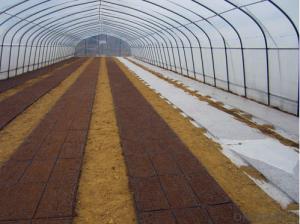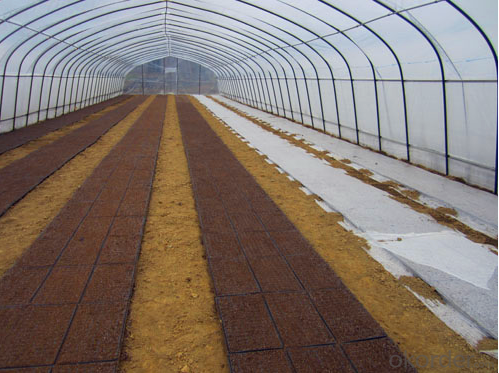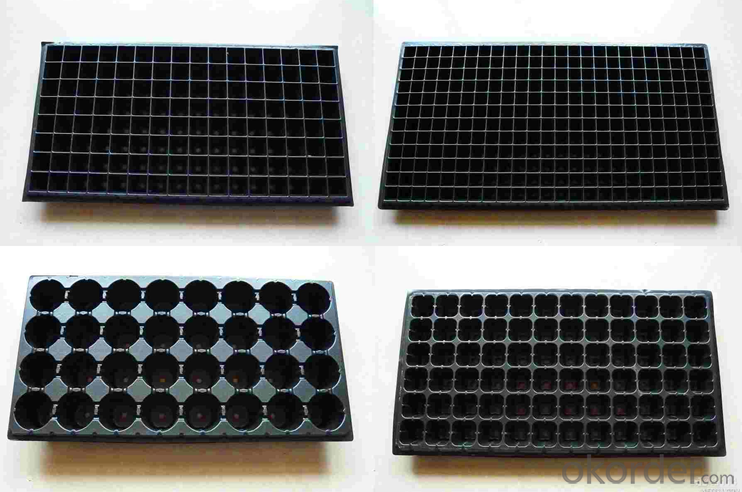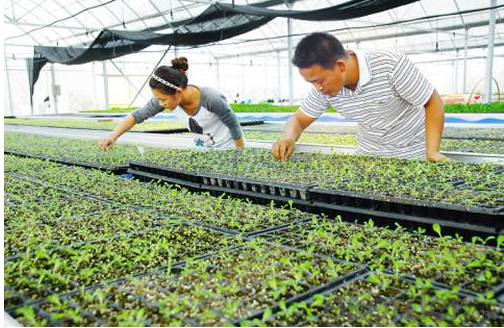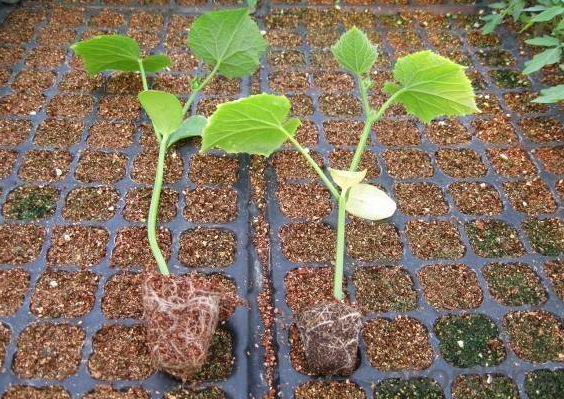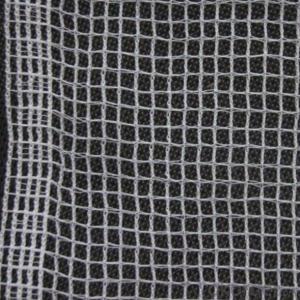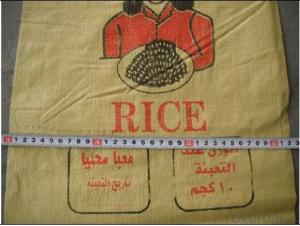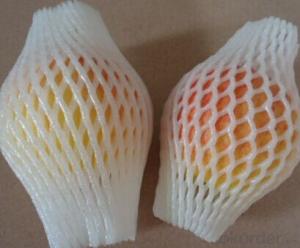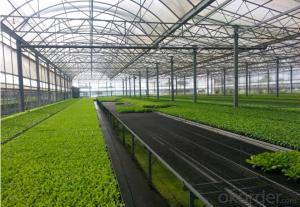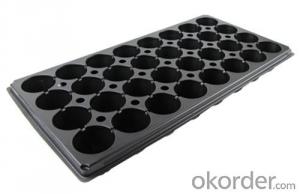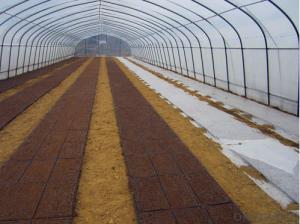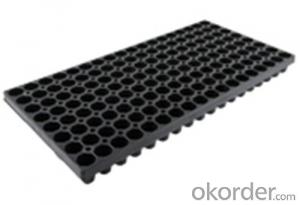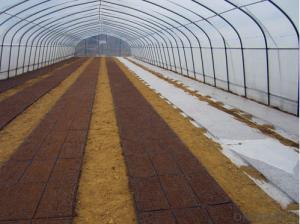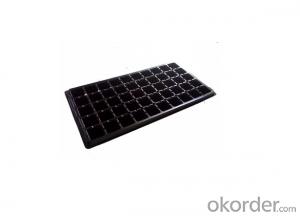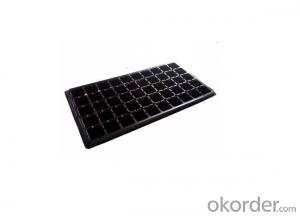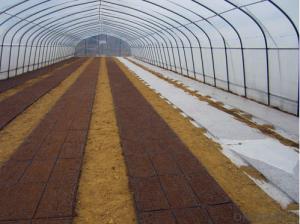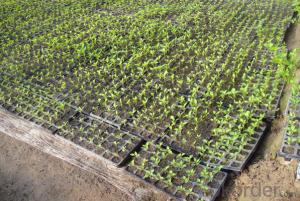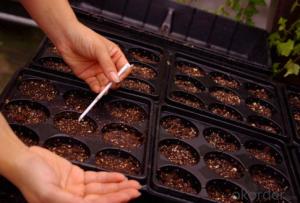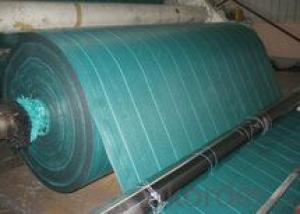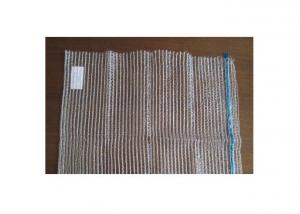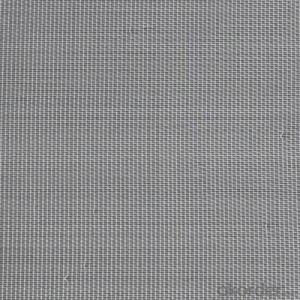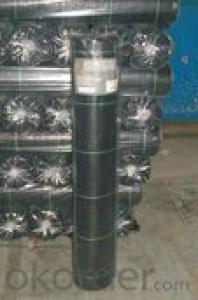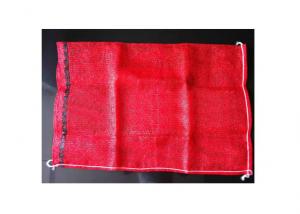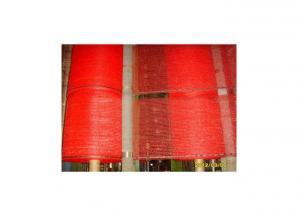Black Plastic Nursery Trays Cell Seed Plug Tray of 32 105 200
- Loading Port:
- China main port
- Payment Terms:
- TT OR LC
- Min Order Qty:
- 3000 pc
- Supply Capability:
- 2000000 pc/month
OKorder Service Pledge
OKorder Financial Service
You Might Also Like
Specification of Plug Trays HIPS Made Plastic Plug Tray for Greenhouse (Growing and Seedling):
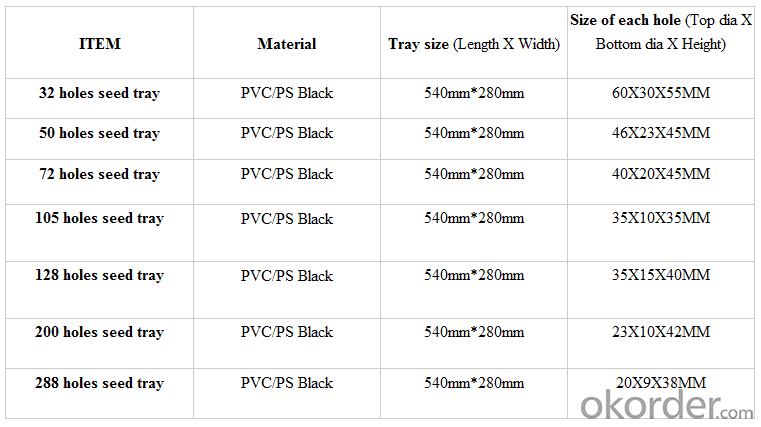
Features of Plug Trays HIPS Made Plastic Plug Tray for Greenhouse (Growing and Seedling):
· Material: HIPS
· Thickness: 0.5mm-1.5mm, Standard:1mm
· Weight: 80g(±5)g-230g(±5)g, Standard weight:155g(±5)g
· Size: length:490mm-540mm, width:190mm-345mm,depth:25mm-150mm
· Standard:540mmX280mm
· Cell count: 18-512
· Package: In Carton
· Warrenty: 8-10 times
Packaging & Delivery
Packing Detail: export standard carton or large bags
Delivery time: 4 million per momth after receipt of deposit
Advantage:
Waterproof, UV-resistant, extrusion-resistant
Easy carry for young seeding plant and grow
Service:
1. Quick, efficient and professional response within 24 hours, 14 hours online services
2. 10 years manufacturing and exporting experience in agriculture field.
3. Technical support and solution by chief engineer.
4. Strict quality control system & team, high reputation in the market.
5. Full range of irrigation products for choice
6. OEM/ODM services
7. Accept sample order before Mass Order
Picture of Plug Trays HIPS Made Plastic Plug Tray for Greenhouse (Growing and Seedling):
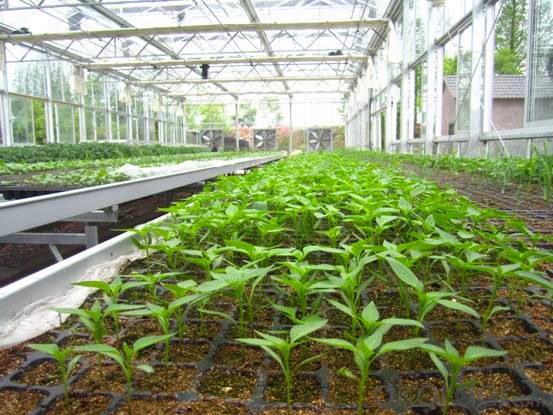
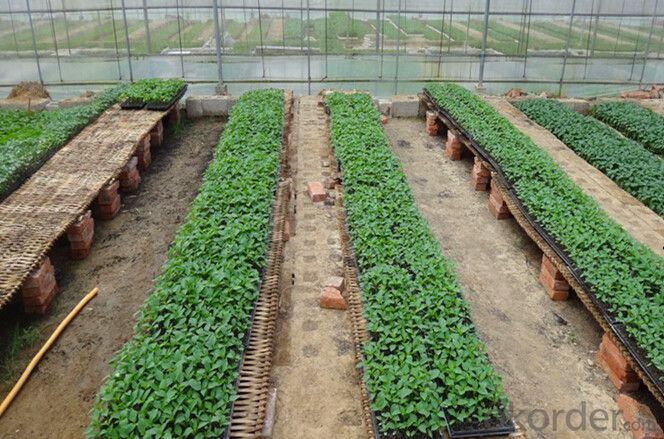
FAQ of Plug Trays HIPS Made Plastic Plug Tray for Greenhouse (Growing and Seedling):
Q: 1.How long is the production time?
A: Usually one to two weeks.
Q: 2.How is the seed tray being packaged?
A: They can be packaged in carton or pallets. Carton size is 1375px*725px*1250px.
Q:3.How many times can the seed tray be used?
A: Under the same environment, it is decided by the thickness. Usually 0.6mm thickness can be used for 1 or 2 times.
1.0 thickness can be used for 3-4 times. 1.5 thickness can be used for 8-10 times.
- Q: Or is it just called Plastic canvas knitting?
- There is no such thing as canvas knitting. But there is plastic canvas embroidery, or commonly known as vinyl weave. This is in imitation of embroidery canvas which is done on cotton canvas. Plastic canvas is also employed in teaching needlepoint and cross stitch to children, since its rigid structure does not require the use of a hoop or frame. Plastic canvas is typically used as a foundation for needlepoint or other canvas work embroidery, usually in acrylic or wool knitting yarn. Due to its rigidity, it is useful for creating 3-dimensional objects such as tissue box covers, small jewelry boxes, handbags, and other decorative objects.
- Q: How do I choose ground cover for a sunny area with sandy soil?
- When choosing ground cover for a sunny area with sandy soil, it is important to consider plants that are well-adapted to these conditions. Look for ground cover options that thrive in full sun and are drought-tolerant. Some suitable choices for sandy soil include creeping thyme, sedum, beach grass, and moss rose. Additionally, consider ground covers that have deep root systems to help stabilize the sandy soil.
- Q: Are there any ground cover plants that are suitable for full sun?
- Yes, there are several ground cover plants that are suitable for full sun conditions. Some popular options include creeping thyme, sedum, creeping phlox, and ice plant. These plants are specifically adapted to thrive in direct sunlight and can provide attractive coverage for open areas in your garden.
- Q: How do you choose ground cover that complements other plants in your garden?
- When choosing ground cover that complements other plants in your garden, there are a few factors to consider. Firstly, take into account the overall aesthetic and style of your garden. If you have a formal or structured garden, consider using ground covers with a neat and compact growth habit. For a more natural or cottage garden, opt for ground covers that have a more relaxed and organic appearance. Additionally, pay attention to the color scheme of your existing plants. Choose ground covers that either match or provide a pleasing contrast to the colors of your other plants. For example, if you have predominantly green foliage, introducing ground covers with variegated leaves or colorful flowers can add visual interest. Consider the height and growth habit of your ground cover plants as well. Ensure they do not overshadow or compete for space with taller plants or shrubs. Instead, opt for ground covers that grow low and spread out, filling in gaps and creating a cohesive look. Lastly, think about the specific growing conditions and requirements of each plant. Take into account factors such as sunlight exposure, soil type, and moisture levels. Choose ground covers that thrive in similar conditions to your existing plants, ensuring they will coexist harmoniously and grow well together. By considering these aspects, you can select ground cover that not only complements the other plants in your garden but also enhances the overall beauty and functionality of your outdoor space.
- Q: What are the advantages of using plastic mesh bags for packaging produce?
- There are several advantages of using plastic mesh bags for packaging produce. Firstly, the mesh design allows for easy visibility and breathability, enabling customers to visually inspect the produce without the need to open the bag. Additionally, the mesh structure allows air circulation, preventing moisture buildup and reducing the risk of spoilage. Plastic mesh bags are also lightweight and durable, making them cost-effective and easy to handle during transportation and storage. Moreover, these bags are recyclable, contributing to environmental sustainability. Overall, plastic mesh bags offer convenience, freshness maintenance, and eco-friendliness in packaging produce.
- Q: Some traits show no phenotypic plasticity, even though it seems that it would always be advantageous to be able to respond to environmental cues. So why are some traits not plastic?
- For example, genetically identical plants grown in sun versus shade will soon look very different from one another. It turns out that some species are more plastic than others. Until now, we have not been able to determine what kinds of genes determine whether or not an organism displays phenotypic plasticity. A previous study measured variation in activity level for each of the roughly 6000 genes found in yeast across a range of stressful environments. Some genes varied enormously in their expression levels from one environment to the next, while others were relatively constant. That is, some genes were more plastic than others. It has now been discovered that the more regulators a gene has, the more plastic the gene. Furthermore, the plasticity of a gene depends on its function. From these simple patterns, we gain insight into the complex genetic architecture that determines how well an organism can respond to environmental change. So, some genes are so vital that they are tightly regulated and not plastic and others are more flexible (plastic).
- Q: Can I recycle any plastic even if it doesn't have the Recycling symbol on it?
- I'd be doubtful about trying to recycle plastic that doesn't have the recycling symbol. Even when plastics do have the recycling symbol that doesn't automatically mean that recycling facilities are available in a particular area. Where I live our local council operates a kerbside recycling collection but in the plastics only takes 1 and 2. It's determined by the availability of processing facilities and available markets
- Q: Can agricultural plastic products be used in shade structures?
- Yes, agricultural plastic products can be used in shade structures. Agricultural plastic products such as shade nets or plastic films can be specifically designed and used to create shade structures in agricultural settings. These structures help provide shade and protect crops from excessive sunlight, heat, and other environmental factors, promoting optimal growth and productivity.
- Q: How does agricultural plastic affect post-harvest storage and transportation?
- Agricultural plastic plays a crucial role in post-harvest storage and transportation by offering various benefits. It helps protect harvested crops from damage, spoilage, and contamination during storage and transportation. Plastic materials such as bags, crates, and covers provide a barrier against moisture, pests, and diseases, preserving the quality and freshness of the produce. Additionally, plastic packaging allows for efficient stacking, easy handling, and reduced product loss. However, improper disposal of agricultural plastic can lead to environmental pollution, which emphasizes the need for proper recycling and waste management practices in the agricultural sector.
- Q: How do ground cover plants help with erosion control?
- Ground cover plants help with erosion control by providing a protective layer that prevents soil from being washed away by rain or wind. Their dense roots bind the soil together, reducing its susceptibility to erosion. Additionally, the plant's foliage acts as a barrier, breaking the impact of raindrops and reducing the force of water runoff. Overall, ground cover plants play a crucial role in stabilizing the soil, preventing erosion, and preserving the integrity of the landscape.
Send your message to us
Black Plastic Nursery Trays Cell Seed Plug Tray of 32 105 200
- Loading Port:
- China main port
- Payment Terms:
- TT OR LC
- Min Order Qty:
- 3000 pc
- Supply Capability:
- 2000000 pc/month
OKorder Service Pledge
OKorder Financial Service
Similar products
Hot products
Hot Searches
Related keywords
